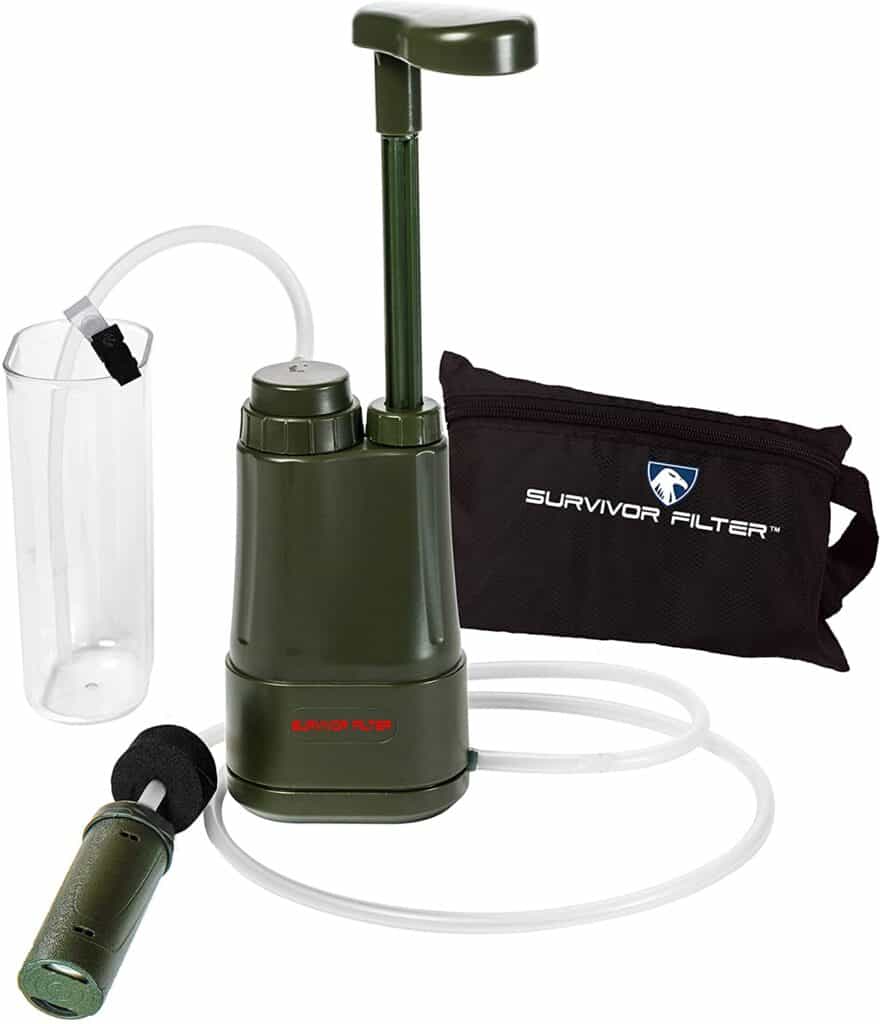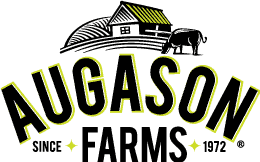Disasters, droughts, flooding, wildfires, and wind storms disrupt hundreds of thousands of lives every year and this number seems to be increasing if you count the recent global pandemic. Every disaster or pandemic has lasting effects such as people that are left without essentials like food and water. After looking at all that we’ve been going through in recent years you can’t help but ask yourself, is there a food shortage coming? Considering the rising price of groceries, the slowdown of production in meat packaging, failing farms, labor shortages, and political upheavals leads one to entertain the idea that a food storage could possibly be on the horizon.
So.. How can we prepare for, survive, and overcome a food shortage?
To prepare for and survive a food shortage one must identify potential risks in your area, take an inventory of your current resources (especially food and water), develop a food storage plan to grow both a short and long term food storage, start a garden (even if it’s small or only indoors), learn to preserve foods either that you buy or grow yourself, raise chickens and other livestock, and stock up on other emergency items.
Don’t Panic! But remember that those who are prepared will have no need for fear.
Let’s look a little deeper at these items and ideas on how to survive a future food shortage.
Identify potential food shortage risks that are specific to your area
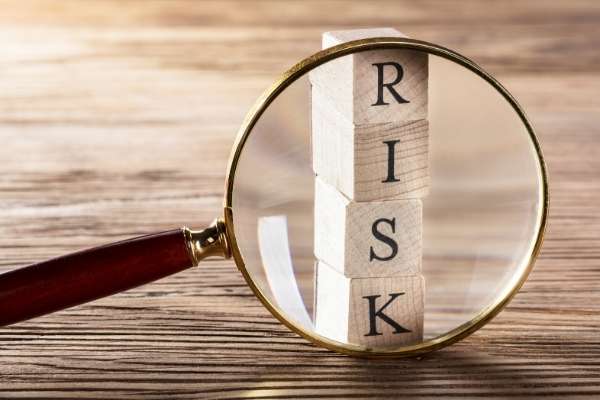
Is your geographical location more likely to experience a drought, a flood, tornado, wildfire, high winds, earthquakes, or something else? It’s important to consider natural disasters because they can happen fast and with little warning leaving you and your family without food or fresh water. Or maybe inflation will take hold in your country and food prices will skyrocket.
Natural disaster caused food shortages
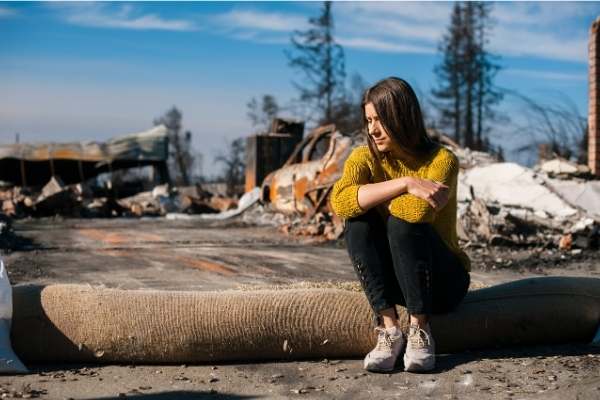
- droughts
- floods
- tornados
- wildfires
- high winds
- hurricanes
- earthquakes
- power outages
- or something else
If a disaster occurs local responders may not be able to reach you immediately, so being prepared and understanding what to do can reduce fear, anxiety, and losses. Communities, families, and individuals should know what to do in case of disaster. People can also reduce the impact of disasters and sometimes avoid the danger altogether if they are prepared.
You must have at a minimum 3 days (72 hours) worth of food and supplies to plan on surviving being stranded by disasters to give time for emergency responders to reach you. The easy way to acquire a 3-day emergency supply of food is to find a premade kit that can be stored for the long term. Here is a great option that has a 20-year shelf life, check the price of this 4-person Emergency Food Storage Kit on Amazon. You can pack your own emergency food as well, just make sure to store it in its own bucket or bag that you can carry with you if you need to leave your home in a hurry.
Rising food prices or slowed food production cause food shortage
Could food production or packaging companies shut down (for whatever reason) and cause a major shortage of food for sale in your local grocery store? Considering recent events it doesn’t sound as crazy anymore to think that companies shutting down can happen even on a global scale. It seems that steeply rising food prices are becoming a larger concern than I ever thought possible. We can’t just shrug our shoulders and pretend that this isn’t happening or isn’t possible. It is not only possible but happening right before our eyes!
Take an inventory of your current resources (especially food and water)

In order to survive a food shortage, it is essential that you know what resources you already have on hand so that you can determine what you need to stock up on.
Food reserves
Look at how much food you currently have stored. How long can you and your family live on that food? Determine how much food you need to keep your family eating for 3 months and then start considering what it will take to stockpile enough for up to a year. Use our helpful food storage calculator tool to determine how much food storage you will need for yourself and your family.
Water reserves or emergency water purifier
How much fresh water do you have immediate access to? A few packages of water bottles, gallon water jugs, and if possible a couple of food-grade water barrels are handy in emergency situations. To help with planning Check out our water storage calculator tool and our article How do you store large amounts of water? Long-Term Water Storage.
If your circumstances permit, having a large food-grade water barrel will assure that you have access to large amounts of water when needed. I have found this 55-gallon BPA-free water barrel (Check the price on Amazon) to be one of the best ways to store large amounts of drinking water. The reason is that it includes a siphon hose, hand pump, and water treatment in addition to the barrel. This makes it so that I don’t have to contaminate the water when I try to access it.
Storing a large amount of water might be impractical for you depending on your situation so having a good water filter that you can fit in a bag or 72-hour kit could be life-saving. Even if you have a large water storage a good water filter can be helpful because over time that water will likely become contaminated and either need to be filtered, treated, or replaced.
I use a water filter when drinking from my water storage if I’m unsure of water contamination. I keep several of the below water filters in different locations so that I can easily have access to them whenever needed.
By far my favorite mini water filter straw is the Sawer mini straw (Check the price on Amazon). It is better than the Life Straw because it will filter up to 100,000 gallons of water and the Life Straw will only filter up to 1,000 gallons of water.
I also own a couple of Survivor Filter Pro – Hand Pump Water Filters (Check the price on Amazon). I like this hand pump filter the best for water storage because I can easily drop the receiving inlet hose in my water storage and pump out clean water without moving, tipping, or sticking my hand in the container.
For more information about water filters and how to know exactly which one is right for you see our article Selecting the Best Emergency Water Filters: Buyers Guide.
The Survivor Filter PRO (See on Amazon) is one that I use camping and have on hand for emergencies. It is great because it filters to 0.01 Microns which removes all bacteria, parasites, and reduces most heavy metals, bad tastes, and chemicals.
“Store at least one gallon of water per person for drinking and sanitation. A normally active person needs about three-quarters of a gallon of fluid daily, from water and other beverages. However, individual needs vary depending on age, health, physical condition, activity, diet, and climate.”
Department of Homeland Security
Gardening capability
Do you live in a rural place with a yard that you can utilize a section of for a home garden or do you live in an apartment in the city? Even if you don’t have a yard try getting some pots and planting an inside garden. Assessing whether or not an outside or inside garden is right for you in your situation is worth considering. Gardens are a great way to be self-sufficient and provide food for yourself with no dependence on a grocery store. See more about gardening lower in this article and check out our article How to Prepare a Peach Seed for Planting.
Tools
What tools do you have at home? Tools may include helpful items such as food preparation tools like a wheat grinder (see my article Selecting the Best Grain/Flour Mill, Ultimate Buyers Guide), a bread mixer, or a pressure canner. Home production tools might include anything from gardening tools to beekeeping supplies to specialty tools for raising livestock. My favorite tool to use is our home freeze drier (check out my article Buying a Home Freeze Dryer, What You Need to Know First). It is my favorite method of food preservation because the food keeps a very similar taste and nutritional value.
Knowledge and skills
Learn all you can about building a food supply, gardening, food preservation, and basic survival skills. This education will literally be life-saving in the case of a widespread food shortage.
Develop a food storage plan to survive a food shortage

Can you allocate a percentage of your monthly income to building up your stockpile/supply of food? Put together a simple plan to acquire a little bit of food storage each month. Simply decide how much to budget each month to put toward building your food storage. Check out our article How to be a prepper on a budget and where to start.
Build up a short and long term supply of food
A Short-term food supply could include any number of foods that you already have in your pantry and are eating on a daily or weekly basis. The wonderful reality of a 2-week to 3-month food supply is that most non-perishable foods will work well in your storage plan as long as you are using and rotating your food supply.
A long-term food supply of basics such as wheat, rice, beans, oats, pasta, sugar, and salt can be stored for 20 to 30 years if packaged appropriately. Freeze dried and canned foods are great for long-term food storage. If you ever experience a food shortage, a long-term food supply could be one of the best insurance policies you ever invest in. Check out our article on The Best Long-term Food Storage Items.
What should I buy to prepare for a food shortage?
Here’s a list of what you should buy to prepare for a food shortage:
- Flour
- Rice
- Noodles and Pasta (various varieties, white & wholewheat)
- Vegetables (Freeze Dried, Canned, and Dehydrated)
- Fruit (Freeze Dried, Canned, and Dehydrated)
- Oats
- Sugar (white, soft brown, dark brown)
- Vegetable and Olive Oil
- Powdered Milk
- Salt, Baking Powder, Baking soda, other Herbs, and Spices
- Chicken (Canned and Freeze Dried)
- Beef (Canned, Freeze Dried, Dehydrated, and Jerky)
- Cans of Soup
- Peanut Butter (protein)
- Nuts (variety of)
- Beans (various varieties of dried and canned)
- Full Freeze Dried Meals
Freeze dried foods are very convenient for emergencies because it is easy to prepare (can be eaten as is or only requires hot water to reconstitute). Learn how to best store over 40 different freeze dried foods (and their shelf life) and know what freeze dried foods are best to buy for your food storage.
Here are a few of my favorite food storage companies for long-term food storage (10+ year shelf life) that you can find and easily order on Amazon.
My Top 5 Favorite Food Storage Companies:
- ReadyWise Food Storage Company (Check out ReadyWise’s Food on Amazon)
What I like most – ReadyWise has a great variety of reasonably priced bulk meals that have a good taste (taste is subjective) and they use quality ingredients.
- Nutristore Freeze Dried Food (Check out Nutristore Food on Amazon)
What I like most – Nutristore is my favorite top-quality, nutritious freeze-dried food. This makes it a little more expensive but well worth it.
- Augason Farm Food Storage (Check out Augason Farm’s Foods on Amazon)
What I like most – Augason Farms has a large variety of individual shelf-stable food options (like dried onions) that I like to use in my cooking.
- Mountain House (Check out Mountain House’s Food on Amazon)
What I like most – Mountain House is a good company that started making meals for special forces back in Vietnam so they have stood the test of time.
- Peak Refual (Check out Peak Refual’s Food on Amazon)
What I like most – Peak Refual has quality freeze-dried meals and pouches that are convenient for backpacking, camping, and hunting.
Here are a couple of my favorite freeze dried items that I will occasionally use in my cooking:
- Freeze Dried Ground Beef (See the price on Amazon) – I like to use it as an ingredient in cooking
- Powdered Milk, Butter, and Whole Egg Poweder (See the price on Amazon) – Use in cooking
- Freeze Dried Fruit Bucket (See the price on Amazon)
- Freeze Dried Vegetable Bucket (See the price on Amazon)
Above are my favorite food storage companies but there are a lot long term food storage items that are worth having. If/when your area experiences a food shortage any long-term food will be life-saving. See all long-term food storage options on Amazon.
Things to consider when buying food storage to prepare for a food shortage:
- What’s available
- Freeze dried, canned, dehydrated, and other shelf-stable foods
- Shelf life
- Nutrition
- Plenty of calories
- Within your budget
- Foods that you enjoy and regularly eat
Learn to preserve foods either that you buy or grow yourself
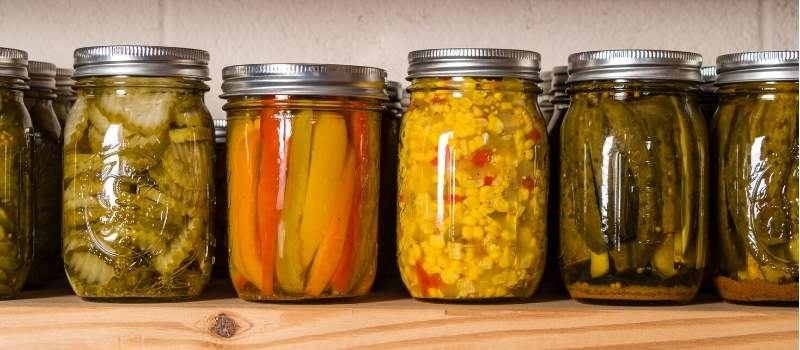
Preserving fruits, vegetables, meats, and other foods is a great thing to learn that will prepare you for surviving a food shortage. If you have or get a garden growing you can learn how to preserve your harvest. If you buy bulk fresh fruits and vegetables you can learn how to preserve them. If you buy extra fish, chicken, beef, pork, or other meat you can learn to preserve them for the long term.
Preservation Methods
- Canning (pressure canning or water bath canning)
- Freezing
- Drying
- Pickling
- Freeze Drying (See my article Best Freeze Dried Foods: Must-Haves For Any Circumstance)
Learning how to preserve foods through these five methods listed above can be invaluable if you ever face a food shortage. My favorite food preservation method is freeze-drying. You can freeze-dry your garden produce, create the perfect emergency food supply, make camping meals and healthy snacks. Unlike other methods of food preservation, freeze-drying does not shrink or toughen the food and retains flavor, color, and nutrition. Freeze-dried food stores for up to 25 years on the shelf. To know if a freeze dryer is right for you see my article Buying a Home Freeze Dryer, What You Need to Know First!
Also, check out our article Pressure Canning: The Ultimate ‘How To’ Guide For Beginners or our article How To Freeze Fresh Fruits And Vegetables.
Start a garden (even if it’s small or only indoors)
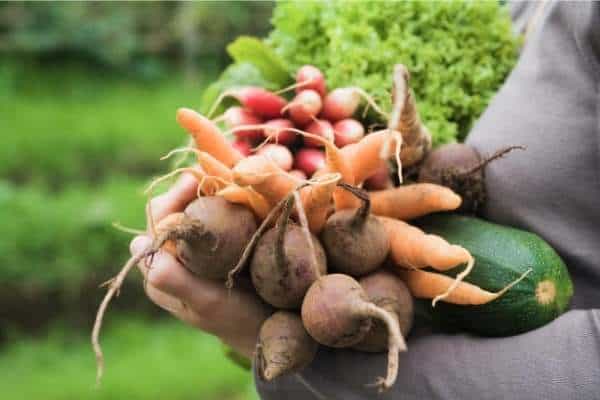
Gardening is a great way for you and your family to survive a future food shortage. Your own education is one of the most important investments you can make and learning to garden can help you grow your own food.
10 easy steps to start garden
To get started, here are 10 steps recommended by the National Gardening Association.
1. Find the right location
Choose a location for the garden that has plenty of sun, ample space and close proximity to your hose or water source. Find a level area to help prevent erosion.
2. Select vegetables
Decide what produce to include based on your climate, space, tastes and level of expertise. Newcomers may want to consider some of the easier crops to grow, like carrots, beans, cucumbers, peppers and lettuce.
3. Prepare soil
Mix compost and natural fertilizers into your garden to condition the soil for your plants. Garden-supply stores can test the acidity of your soil and recommend supplements, or you can simply purchase specially made soil in bulk.
4. Check planting dates
Growing conditions and ripening cycles are different depending on the plant and the season, so you should not sow all the seeds at the same time. Planting dates can be found on seed packets. Review the ideal conditions for each veggie you want to plant before creating a gardening schedule.
5. Plant seeds
Place your seeds or plants into the soil, following the depth and spacing directions carefully.
6. Water
Gently spray the garden with water to keep the soil evenly moist throughout the growing season. Purchase a spray nozzle for your hose so you can create a gentle rain-like mist for your garden.
7. Prevent weeds
Mulching is the most effective way to prevent weeds. Add a 2- to 4-inch-thick layer of organic mulch to your garden to keep the weeds from overtaking your crops. If weeds do appear in the garden, grab them low on their stems and yank sharply, making sure to extract the entire root.
8. Give plants room to grow
Check the spacing guide on the seed packets and be sure to remove crowded seedlings right away.
9. Fertilize
Lightly till the soil by hand and add fertilizer to keep it rich. You can purchase prepared garden fertilizer or make your own from items like Epsom salt, eggshells, fish tank water and kitchen compost.
10. Pick, enjoy, preserve, and store
Harvest vegetables when they’re young and tender—but only pick them when you plan to use them. Pull root crops as soon as they reach edible size. Collect leaf crops by cutting them to within 2 inches of the ground. Finally, enjoy but also preserve your harvest!
Indoor Garden
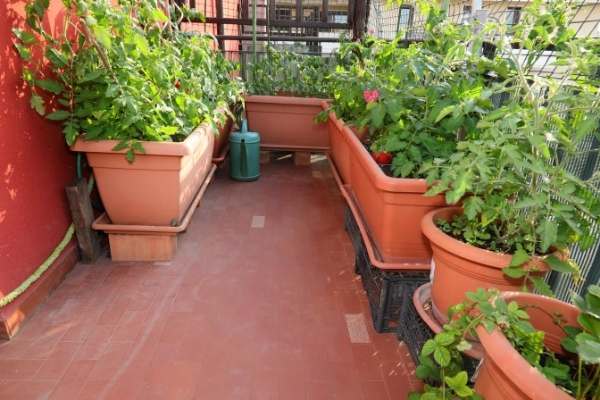
Growing a garden using pots indoors is also possible for those who may not have space outside.
Food ideas to grow inside include:
- Avocados
- Radishes
- Mandarin oranges
- Carrots
- Microgreens
- Herbs
- Potatoes
- Spinach
- Tomatoes
- Strawberries
Things you’ll need include:
- Light – low to medium to high depending on what you’re growing (Here is a great dimmable light on Amazon)
- Potting mix
- Containers with drainage holes (Here is a vertical raised garden bed on Amazon)
- Humidity and Water
- Air circulation – to prevent mold and fungus, assist pollination
- Temperature – 60°F/15°C or 70°F/20°C range depending on plants
- Fertilizer – your soil will need feeding as the plants grow
Raise chickens and other livestock
To help you survive a food shortage consider getting chickens for eggs and poultry and/or other livestock such as a cow for beef, a pig for pork, or fish is worth considering. Depending on your climate and the size of your land, consider cattle for ongoing milk supply and eventual meat supply.
Really chickens aren’t very difficult and worth considering. Watch the video bellow to learn really how easy raising chickens can be.
Learn how to catch and cook fish
Learning how to catch and fillet fish can help you and your family survive a food shortage. I grew up fishing and can honestly say that it not only a way to catch your own food but it’s actually quite enjoyable to get out and away from everyday life, stresses, and the pandemic. Here is a YouTube video of Luke showing you how to pick gear, locations, bait, rigs, and more to help you who are interested in starting to fish.
Here is a good starter rod and reel kit (check the price on Amazon).
If you really are interested in starting to fish you may want to look into an accessories kit that has a tackle box, sinkers, jigs, swivels, and bobbers like this cheap kit on Amazon.
Getting bulk meat to keep in your freezer
We buy a half of a beef about every year and a half from a guy that raises cattle and then we keep it in our freezer. The great thing about doing this is it is cheaper than buying smaller amounts of ground beef, steaks, roasts, and hamburger patties from the store. Additionally, I’m sure you all have seen the price of beef in the grocery stores… It is not unreasonable to be worried about skyrocketing food prices and food shortages in the near future.
Stock up on other emergency items
Finally, it is important to stock up on other emergency items. If there is a future food shortage coming then there will be some panic and people will turn to many other items beyond just food to stock up on. At that point, it will be difficult and even dangerous to compete with people at stores. Make a list and start acquiring other things that are most important to you.
Some ideas include:
- First Aid Kit (Here is a great Emergency Kit option on Amazon)
- Medication and over the counter drugs
- Waterproof Lighter/Matches (See price on Amazon)
- Flint and steel
- Gas Stove (Check the price of this 2 burner stove on Amazon)
- Propane (See Price on Amazon)
- Garbage Bags
- Toilet Paper
- Plates/Bowls
- Utensils
- Wipes
- Water Purifier (see the price of my favorite filter on Amazon)
- Batteries
- Sunscreen
- Bug Spray
- Hand/Foot/Body Warmers (see on amazon)
- Shelter/Tent
- Ax
- Shovel (see survival shovel on Amazon)
- Duct Tape
- Walkie Talkies (see the price on Amazon)
- Extra Blankets/Bedding
- Contact Solution/Glasses
- Deck of Cards (for entertainment)
- Hard Drive with backups of all your pictures and important documents
- Money (Cash in small bills)
Conclusion
Although, there are many benefits to prepping some may wonder is being a prepper worth it? see an unbiased perspective. Then follow our beginners guide on how to start prepping.
I sincerely hope that we won’t face any food shortages in the future but I’m not willing to put my wife’s and kids’ health and safety on the line by just ignoring the possibility of it actually happening. From natural disasters to global pandemics it is very possible that we may face a food shortage or two in our lifetime. Also, with rising food prices, looming government shutdowns, and closing businesses the fear of a food shortage is becoming more and more real for many people. Prepare now and you will not fear.



